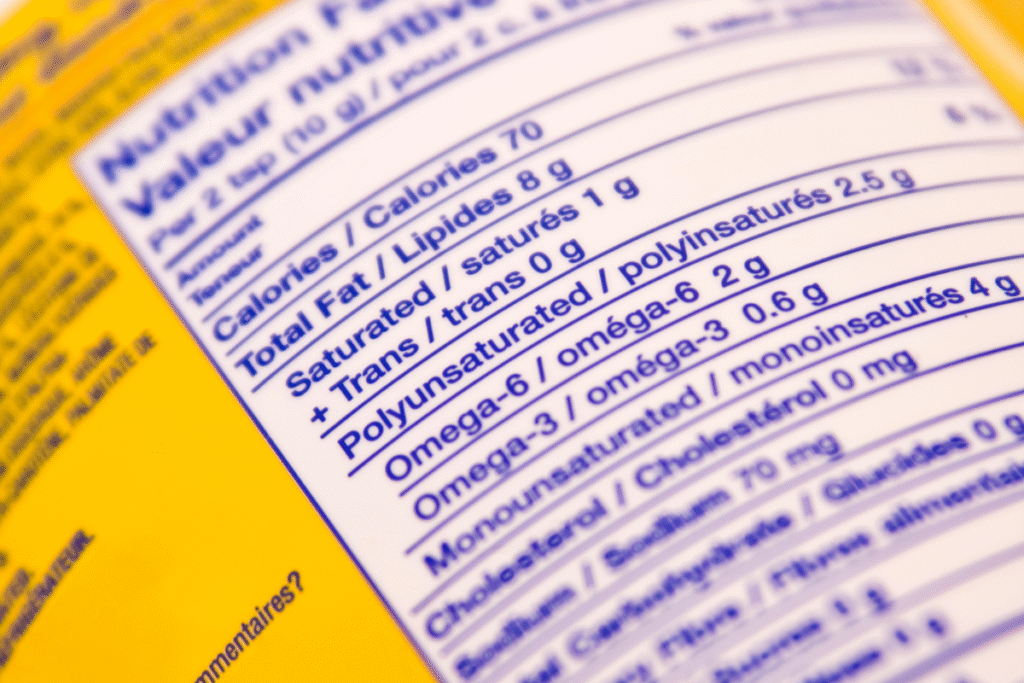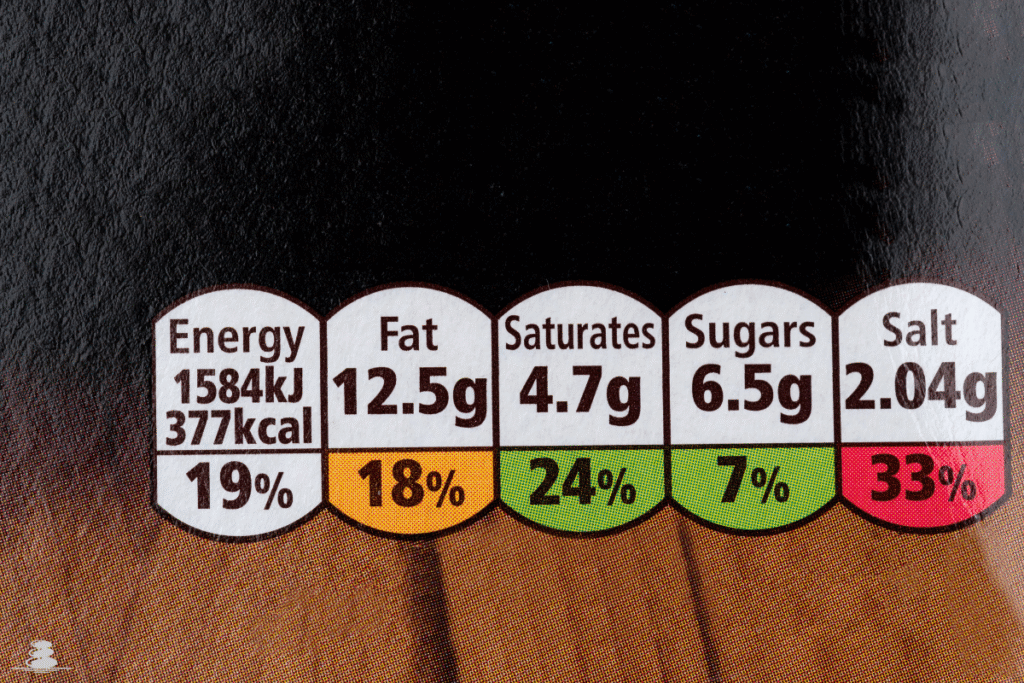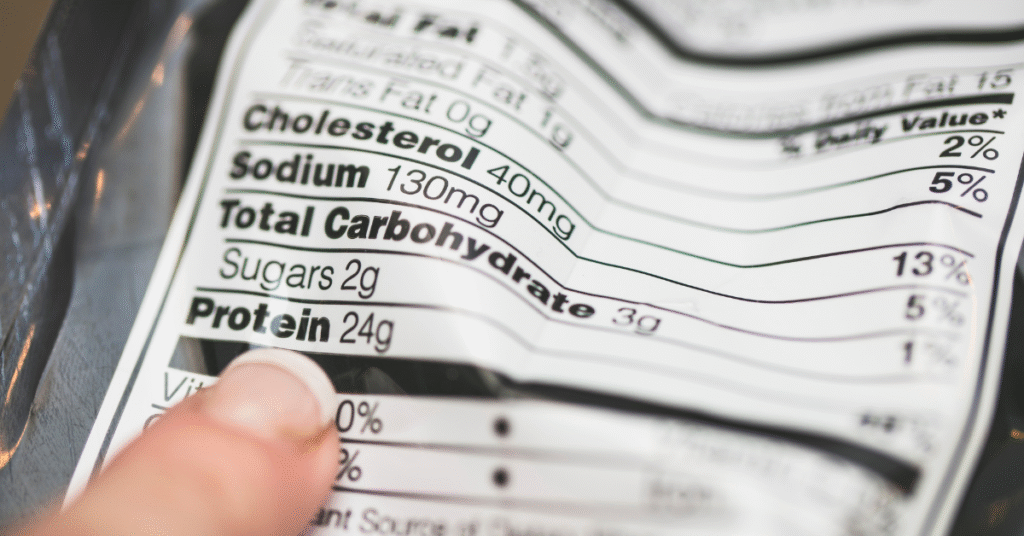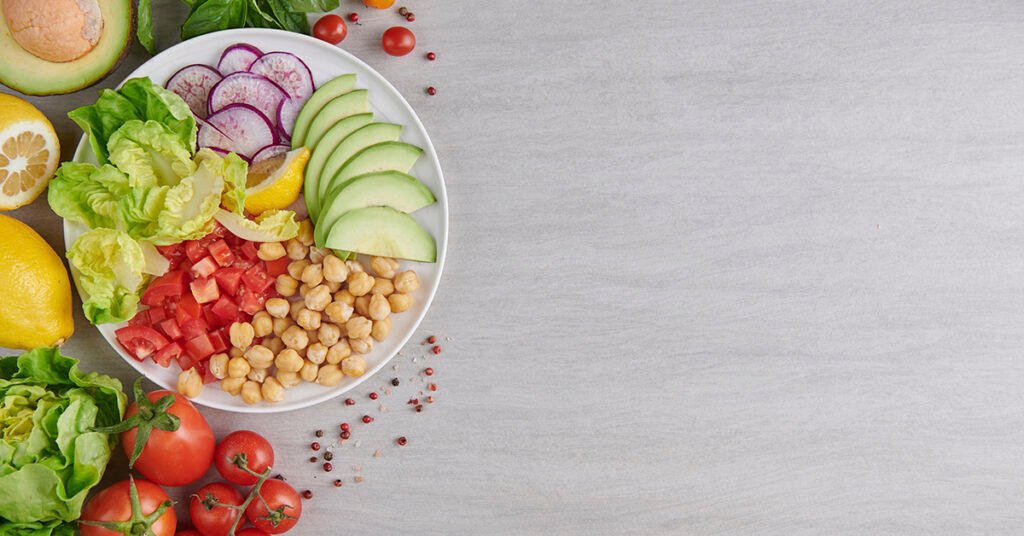In a world full of food choices, nutrition labels are your best tool for making healthier decisions. Learning how to read nutrition labels is essential whether you want to eat clean, lose weight, or simply gain better control over your diet. By understanding food labels, you empower yourself to shop smarter and choose foods that truly nourish your body.
This guide will break down the basics and provide practical smart shopping tips to help you navigate the grocery store with confidence and clarity.
Why Nutrition Labels Matter

Nutrition labels are like the fine print of your food. They show you exactly what you’re consuming — from calories to fats, sugars, and micronutrients. Without reading them, it’s easy to fall into the trap of eating “healthy” foods that are actually packed with hidden sugars, sodium, or unhealthy fats. Here are key reasons why they’re important:
1. Transparency About What You Eat
Nutrition labels show exactly what’s in your food — from calories to sugar, fat, protein, fiber, and key vitamins and minerals. This helps you avoid hidden ingredients that might not align with your goals or needs.
2. Portion Control
Labels help you understand portion sizes. Many people unknowingly consume multiple servings at once. Reading labels teaches you how much you’re actually eating.
3. Supports Health Goals
Whether you’re trying to lose weight, build muscle, manage diabetes, or reduce sodium intake, nutrition labels provide the data you need to adjust your diet accordingly.
4. Avoids Misleading Marketing
Terms like “low-fat,” “natural,” or “high-protein” can be deceptive. The label reveals the truth — for instance, a “low-fat” product might be high in sugar.
5. Tracks Nutrients and Additives
Labels list not just nutrients you want more of (like fiber or iron), but also those to limit (like saturated fats, trans fats, and added sugars). You can also spot preservatives and additives you may wish to avoid.
6. Helps Families Eat Healthier
Parents can use nutrition labels to choose better options for children and build a healthier household eating pattern.
7. Encourages Mindful Eating
Reading labels encourages a more thoughtful relationship with food. It helps you slow down and ask: “Is this something my body really needs right now?”
Start with the Serving Size
The serving size is the very first thing you should look at on a nutrition label — and for good reason. Every single number listed on the label (calories, fat, sugar, protein, etc.) is based on this specific amount of food. If you overlook this detail, the rest of the label can be misleading.
Why it matters
Let’s say a cereal box lists a serving size of 30 g, and that serving contains:
- 120 calories
- 2 g of fat
- 8 g of sugar
- 3 g of protein
But if you pour yourself a bowl that weighs 60 g, you’re actually consuming double everything:
- 240 calories
- 4 g of fat
- 16 g of sugar
- 6 g of protein
That’s a big difference — especially if you’re trying to watch your calorie intake or manage sugar levels.
Common pitfalls
- Snacking straight from the bag: You might think you’re having a light snack, but if you don’t measure, you could be eating 2–3 times the intended serving.
- Beverages and soft drinks: A bottle may contain “2 servings,” but most people drink the whole thing — meaning double the sugar or caffeine.
Pro tip
Use a kitchen scale or measuring cups to get a visual understanding of serving sizes. After a while, you’ll get used to estimating portions more accurately without needing to measure every time.
Calories: What Do They Really Mean?
Calories are often the first thing people look at on a nutrition label — but what exactly are they?
A calorie is a unit of energy. It tells you how much energy a food or drink provides to your body. You need calories to breathe, walk, think, and exercise. Without enough, your body won’t function properly. But too many — especially from nutrient-poor sources — can lead to unwanted weight gain over time.
Understanding Calorie Amounts
- Low-calorie: 40 calories or less per serving
(Great for snacks or light sides — think cucumber slices or a small piece of fruit) - Moderate: About 100 calories
(Good for mindful snacking or small meals — like a banana or a boiled egg) - High-calorie: 400 calories or more per serving
(Usually a full meal or a very dense snack — like a burger, pastry, or packaged sandwich)
Not All Calories Are Created Equal
Two foods might have the same number of calories, but very different effects on your body depending on where those calories come from:
- 100 calories of almonds will give you healthy fats, fiber, and protein.
- 100 calories of soda is just sugar — no nutrients, no satisfaction, and a quick spike in blood sugar.
So instead of just counting calories, also consider the macronutrient breakdown:
- Protein: Vital for muscle repair and growth. Aim for high-protein options if you’re active or building muscle.
- Carbs: Your main energy source. Focus on complex carbs (whole grains, vegetables) and watch out for added sugars.
- Fats: Not all fats are bad! Choose healthy fats like those from nuts, seeds, olive oil, and avocados. Avoid trans fats and watch your saturated fat intake.
Pro Tip
Think of calories as your body’s fuel — the goal isn’t to eat the fewest possible, but to choose the highest quality fuel to keep you energized and healthy.
What Are % Daily Values (DV)?
The % Daily Value (DV) is one of the most helpful — but often misunderstood — parts of a nutrition label. It tells you how much of a particular nutrient is in one serving of the food compared to the total amount you need each day, based on a 2,000-calorie daily diet (which is a general reference value, not a one-size-fits-all).
Here’s What the Numbers Mean
- 5% DV or less = Low in that nutrient
- 20% DV or more = High in that nutrient
This quick guide helps you evaluate whether a food is contributing a little or a lot of a nutrient to your daily intake.
Use DVs to Your Advantage
- Want more of something? Look for high DVs (20% or more)
→ Examples: Fiber, calcium, iron, vitamin D, potassium, protein - Want less of something? Aim for low DVs (5% or less)
→ Examples: Saturated fat, trans fat, sodium, added sugars
Real-Life Example
Let’s say you’re checking the label on a granola bar:
- Calcium: 4% DV – Low → not a good source of calcium
- Fiber: 25% DV – High → excellent source of fiber
- Sodium: 12% DV – Moderate → be mindful if you’re watching your salt intake
This quick glance helps you compare products and make more balanced choices.
Your actual needs may be higher or lower than the 2,000-calorie baseline — especially if you’re very active, pregnant, or have specific dietary goals — but the %DV still provides a helpful reference point for everyone.

Spotting Hidden Sugars and Additives
Why Reading Beyond the Label Matters
Many processed foods contain added sugars and chemical additives, even those marketed as “healthy” or “natural.” The key to protecting your health is knowing how to identify them.
Sugar Goes by Many Names
Sugar isn’t always listed as just “sugar” on ingredient labels. Manufacturers often use alternative names to disguise it. Here are some of the most common:
- High-fructose corn syrup
- Evaporated cane juice
- Brown rice syrup
- Glucose
- Fructose
- Dextrose
- Maltose
- Fruit juice concentrate
- Agave nectar
- Barley malt
- Molasses
- Honey
If any of these appear in the top three ingredients, that product is likely high in sugar.
Check the Added Sugars Line
The nutrition facts panel now includes a specific line for Added Sugars, which tells you how much sugar was added during manufacturing. This is separate from total sugars, which includes naturally occurring sugars (like those in fruit or dairy).
To put it into perspective:
- The American Heart Association recommends limiting added sugars to:
- 36 grams (9 teaspoons) per day for men
- 25 grams (6 teaspoons) per day for women
Many flavored yogurts, granola bars, and breakfast cereals can contain 15 to 20 grams of added sugar per serving — nearly your entire daily limit in just one item.
“Healthy” Isn’t Always Healthy
Don’t be fooled by marketing terms. Labels such as:
- “Low-fat”
- “Gluten-free”
- “Organic”
- “All-natural”
- “Heart-healthy”
…do not guarantee that a product is low in sugar or free of unhealthy additives. These products often compensate for reduced fat or other changes by increasing sugar, sodium, or artificial flavorings.
Examples of common sugar traps
- Flavored yogurts
- Instant oatmeal packets
- Bottled smoothies and juices
- Salad dressings and sauces
- Breakfast bars and granola
Look Beyond Sugar: Watch for Additives
In addition to added sugars, many processed foods contain synthetic additives, preservatives, and artificial colors. Common ones include:
- Monosodium glutamate (MSG)
- Sodium benzoate
- Artificial dyes (e.g., Red 40, Yellow 5)
- Carrageenan
- Artificial sweeteners like sucralose or aspartame
These ingredients can trigger sensitivities in some individuals and may contribute to long-term health issues when consumed frequently.
How to Take Control
- When possible, choose whole or minimally processed foods
- Always read both the nutrition label and the ingredient list
- Look for short, recognizable ingredients
- Compare similar products and choose the one with less added sugar and fewer additives
Red Flags in the Ingredient List
What to Watch For (and Why It Matters)
Reading the nutrition facts panel is important, but tahe ingredient list gives you the real story. This is where you can see exactly what the food is made of — and whether it’s something you truly want to put in your body.
One key fact: ingredients are listed in order by weight. That means the first few ingredients make up the bulk of the product. If a questionable ingredient shows up early on, it’s likely present in a significant amount.
Common Red Flags to Look Out For:
1. Added Sugars Near the Top of the List
If you see sugar or its many alternatives (like corn syrup, cane juice, fructose, or maltose) in the first three ingredients, that’s a clear sign the product is high in added sugar — even if the front label claims it’s “healthy” or “low-fat.”
Examples of sneaky sugar sources
- Agave nectar
- Brown rice syrup
- Fruit juice concentrate
- Molasses
- Dextrose
Even natural sugars count toward your daily intake and can spike blood sugar when consumed in excess.
2. Hydrogenated Oils (Trans Fats)
These are often used to increase shelf life but come with serious health risks. Trans fats can raise LDL (“bad”) cholesterol, lower HDL (“good”) cholesterol, and increase the risk of heart disease.
Look for
- Partially hydrogenated oils
- Fully hydrogenated oils (even though they may claim “0 g trans fat” if under 0.5 g per serving)
If you spot these in the ingredients, it’s best to avoid the product altogether.
3. Artificial Preservatives and Synthetic Additives
These chemicals are added to extend shelf life, enhance flavor, or preserve color — but many have been linked to allergic reactions, digestive issues, and other health concerns.
Watch out for
- Sodium benzoate
- Potassium sorbate
- BHA and BHT
- MSG (monosodium glutamate)
- Carrageenan
- Artificial colorings (like Red 40, Yellow 5, Blue 1)
While small amounts may be considered safe, regular consumption can build up over time and affect sensitive individuals.
4. Long, Complex Ingredient Lists
A good general rule: If you can’t pronounce it and wouldn’t cook with it at home, think twice. Ultra-processed foods often contain 20+ ingredients, many of which serve industrial purposes rather than nutritional value.
Instead, look for:
- Short ingredient lists
- Simple, whole-food components (like oats, almonds, olive oil, dates)
- Minimal or no artificial ingredients
The more recognizable the ingredients, the closer the food is to its natural form — and the easier it is for your body to digest and use.
The ingredient list reveals what’s really inside your food — beyond calories and fat grams. Take time to scan it before buying. By avoiding red flags and choosing simpler, cleaner foods, you’ll reduce your intake of unwanted additives and support your health with every bite.
Smart Shopping Tips

- Compare similar products and choose the one lower in saturated fat, added sugars, and sodium.
- Choose items with more fiber, protein, and whole food ingredients.
- Avoid being misled by front-label buzzwords like “natural,” “light,” or “low-fat” — always flip to the back!
Quick Comparison: Whole Food vs. Packaged Snack
| Item | Apple | Fruit Snack Bar |
|---|---|---|
| Calories | 95 | 120 |
| Sugar | 19 g (natural) | 22 g (added) |
| Fiber | 4 g | 1g |
| Protein | 0.5 g | 1g |
| Ingredients | 1 (apple) | 10+ including syrups and preservatives |
Whole foods win every time.
Why Understanding Nutrition Labels Empowers You
Learning to read and understand nutrition labels isn’t about perfection. It’s about awareness. Every time you take a moment to scan a label, you’re equipping yourself with the knowledge to make more intentional, health-supportive decisions — no matter your goals.
You don’t have to overhaul your entire diet overnight. Start small. Maybe it’s choosing a yogurt with less added sugar, swapping a salty snack for one with fewer additives, or simply noticing how serving sizes affect your intake. These small habits, over time, lead to lasting changes.
Nutrition labels are a tool — not a set of rules. Use them to guide your choices in a way that feels sustainable and aligned with your lifestyle. You’ll likely find that the more you practice reading them, the more intuitive it becomes to recognize what’s truly nourishing for your body.
So next time you’re at the grocery store, take a moment to flip the package over. Check the serving size, scan for added sugars, glance at the % Daily Values, and read the ingredients list. That simple act is a small investment in your long-term energy, mental clarity, and overall well-being.
Because informed eating isn’t about restriction — it’s about giving your body what it needs to thrive.
Images: Canva



